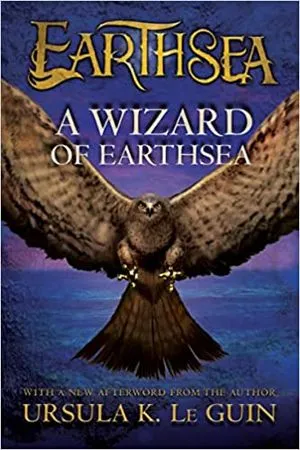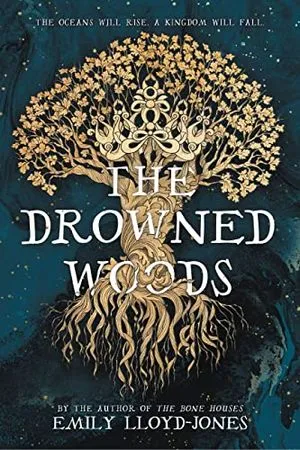
9 of the Most Unique Magic Systems in YA Fantasy
Magic systems establish a set of rules for what magic can do in a fictional world, and crafting a coherent magic system is an important aspect of worldbuilding. Some popular types of magic systems include magic from books, words, or spells, elemental magic, and magic from supernatural beings.
In many fantasies, rules are necessary. Completely unrestricted magic could eliminate any possible plots or be too chaotic for readers. Moral rules demonstrate what magical societies value and prohibit.
Magic systems can be like physics — for example, laws of motion — and like metaphysics, revealing a fictional society’s moral and spiritual beliefs. In Leigh Bardugo’s Grishaverse novels, the Grisha call their power “the small science,” not magic, and contrast it with forbidden magic, called merzost. Despite the comparisons to chemistry and physics, magic is never an exact science. Doing spells or rituals incorrectly, or with the wrong motives, can be deadly but unpredictable.
Not all magic systems are clearly defined, and many readers and authors prefer a more open-ended approach. On Book Riot, Alice Nuttall called this approach “no rules, just vibes.” Soft magic, which is not explained in detail to readers, isn’t necessarily less immersive. This video on hard and soft worldbuilding uses Studio Ghibli films as excellent examples of soft worldbuilding. In dreamlike fantasies like Spirited Away, viewers can imagine their own explanations or focus on the themes and characters, instead of learning intricate lore.
Magic systems can be simple or complex, clearly defined or mysterious. The best magic systems illuminate their stories’ themes. Here are some of my favorite magic systems in YA fantasy.

The Earthsea Cycle by Ursula K. Le Guin
“To light a candle is to cast a shadow.” In the first book of the Earthsea cycle, A Wizard of Earthsea, the wizard Ged’s teacher tells him this. This quote hints at a well-developed magic system with its own logic. In Earthsea, using magic has consequences that must be kept in balance. This is a great lesson for young wizards learning to control their powers. Magic stems from learning objects’ true names, and this is consistent. Wizards can overpower other people by learning their true names as well. This is why most people know Ged as Sparrowhawk, his “use-name,” while the name Ged is a secret.

A Magic Steeped in Poison by Judy I. Lin
The protagonist, Ning, is a shénnóng-shī: an expert tea-maker. In this unique magic system, different types of tea leaves can access memories or heal or poison people. This all depends on how the tea is prepared and served. The magic is inspired by Chinese mythology and tea ceremonies. Ning feels responsible for accidentally poisoning her mother by brewing healing tea, so she travels to the imperial tea competition to redeem herself. Here, magic has consequences that oppose each other and can easily go wrong.

The Drowned Woods by Emily Lloyd-Jones
In a fantasy inspired by Welsh mythology, Mererid is a water diviner. She’s been labeled as dangerous and sought after since birth. After working as the prince’s water diviner, she teams up with her former mentor and several other engaging characters to get revenge on the prince. One member of the team, Fane, has an adorable, loyal Welsh corgi, Trefor, who sneezes when he senses magic. I enjoy ironic nods to real-world science in fantasy books. Diviners draw on the water and iron in people’s blood, even though they may not describe it in those terms.

Daughter of the Moon Goddess by Sue Lynn Tan
Xingyin lives on the moon with her mother, Chang’e, the Moon Goddess. When Chang’e was pregnant with Xingyin, she stole the Celestials’ immortality elixir to save both their lives, and the Celestials banished her to the moon. The first book follows Xingyin’s journey to the Celestial Kingdom to save her mother from imprisonment. The magic system involves drawing on chi (life force) and obtaining magical weapons. There are also questions of ethics. Life magic like Xingyin’s can be reined in, but she understandably distrusts magic that uses mind control.

Camelot Rising Trilogy by Kiersten White
This feminist, Arthurian retelling subverts a lot of the sexism in the original myths. In the first book, The Guinevere Deception, Guinevere’s identity is a mystery. The trilogy combines several types of magic: water magic, fire magic, binding spells, and more. Its magic can be both innate and learned. Using magic always has a price: Guinevere’s breath magic can leave her feeling winded. Her magic, which she doesn’t remember learning, offers clues about her identity and experiences later in the trilogy.

Legendborn Cycle by Tracy Deonn
Yes, there are two Arthurian fantasies in a row, because they’re each so creative and distinctive! Bree, a student in an early college program, learns about a secret society of descendants of King Arthur’s Knights of the Round Table. This series is diverse and addresses the white supremacy and hierarchies found in exclusive, secret societies. It takes the history of its setting, present-day North Carolina, into account. The magic is fascinating, original, and clearly defined. The name Legendborn refers to the highest-ranked members of the Order, who call magic the aether. Ancestors and traditions are important to this series’ magic system.

Sweet & Bitter Magic by Adrienne Tooley
This is a slow-burn, sapphic fantasy romance set in a world with references to many European fairy tales. Tasmin is a witch who was banished from her coven and cursed with an inability to feel love. So, as payment for Tasmin’s spells, customers magically siphon their love for other people to her. She meets Wren, who’s a source: a vessel for magic who cannot use it. This makes witches and sources opposites, in a sense. In many fantasies, characters either are magical or not, so, sources are a fascinating complication.

Fire Becomes Her by Rosiee Thor
This book has an awesome fire-based magic system, and the politics and fashion are loosely inspired by Prohibition. Flare is pure, incendiary fire magic, while the much weaker, diluted version is called flicker. This creative magic also fits the novel’s themes and aesthetics perfectly. The protagonist, Ingrid, must decide whether to support the wealthy, ruling class or the opposition. So, with the Prohibition vibes and the focus on inequality, it makes perfect sense that there’s a cheaper, “bootleg” version of fire magic.

Children of Blood and Bone by Tomi Adeyemi
The Legacy of Orïsha series is set in a mythical country inspired by Nigeria, specifically Yoruba culture and religion. The front of the book contains a map of Orïsha and a list of the 10 clans of Maji, each associated with a Yoruba deity. Maji say prayers and magic in Yoruba, so, the king bans Yoruba to oppress Maji. The protagonist, Zélie, is a Reaper, with powers over spirits of living and dead people. Reapers are associated with Oya, the goddess of rebirth. Other Maji work with fire, earth, healing, water, or dreams. Blood magic using bone relics is the most dangerous and is used as a last resort.
Want To Explore More Magic Systems?
Check out magic systems based on math, words, music, or other art forms.









